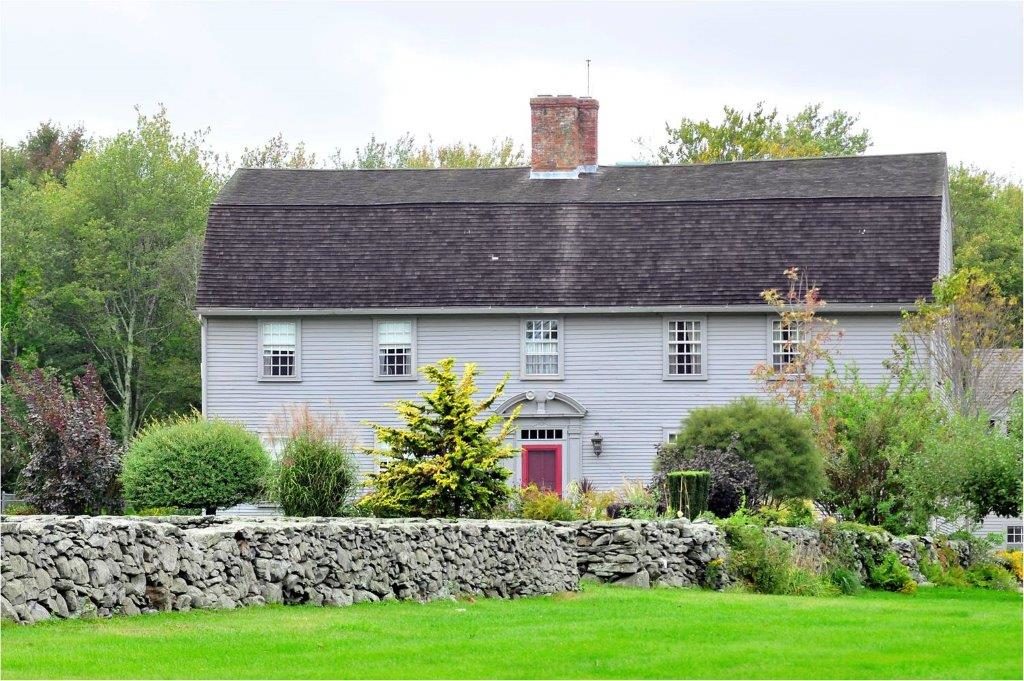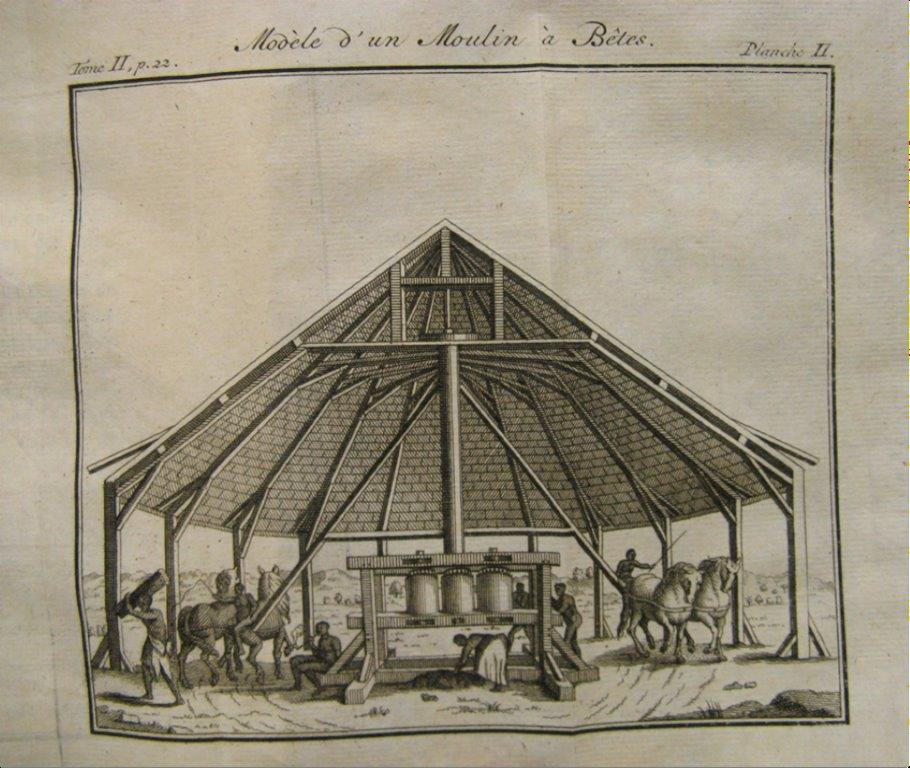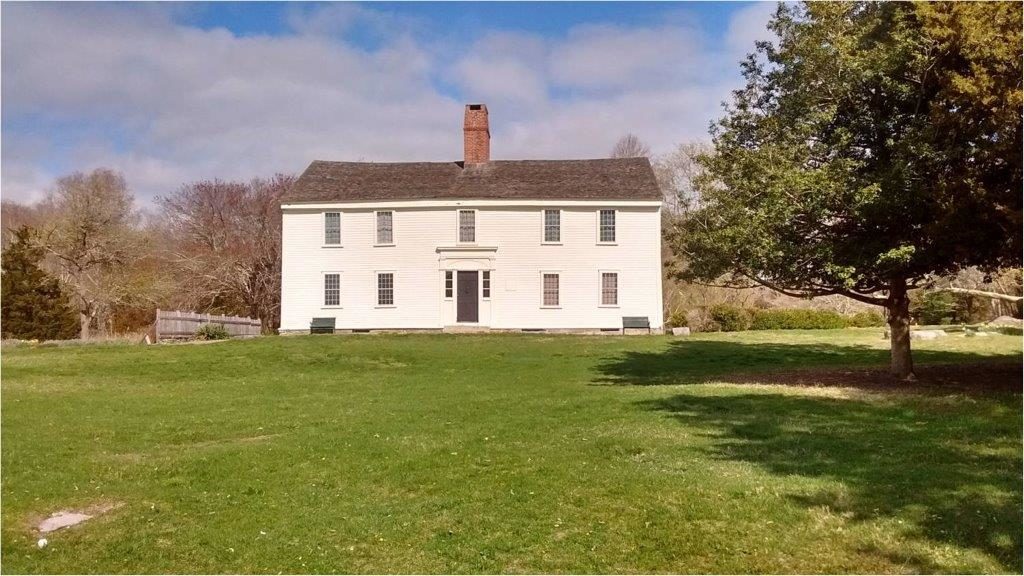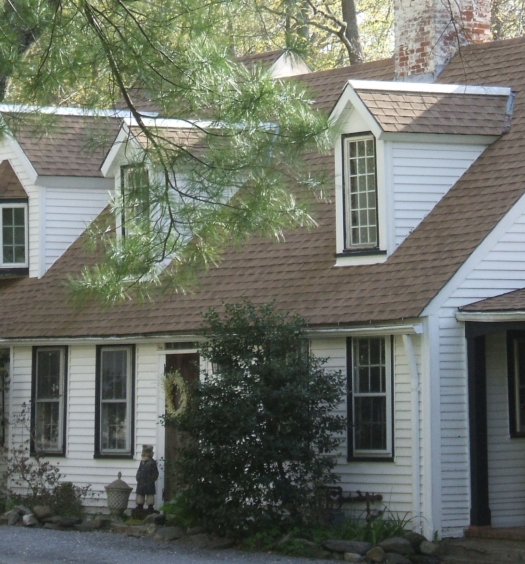The legend of Hannah Robinson is a part of South County folklore that intersects with the history of the Narragansett Planters. Beautiful Hannah fell in love with her charming French language tutor and dance instructor, Pierre Simond, and, defying her wealthy and proud father, Rowland Robinson of Narragansett, ran away with Pierre to Providence. Once in Providence, the French cad neglected her and she fell ill. Upon hearing of her plight, Rowland Robinson swallowed his pride and headed off to Providence to retrieve his critically ill daughter. Hannah died on the trip back to the Robinson home, but not before she was able to pause along the journey at a great stone ledge overlooking the estate of her family and look down upon her childhood home. The critical detail often lost to those who first hear this tragic love story has to do with the Narragansett Planters themselves, the Robinsons among them. How was it that, in eighteenth-century in South County (then known as King’s County), a group of farmers was able to collectively employ French language and dance instructors, along with numerous other tutors for their children; not to mention musicians, portrait artists, craftsmen skilled in wall and floor stenciling, English-trained cabinetmakers, and the like? Who were these Narragansett Planters? What led to this kind of success by the middle of the colonial period in South County?
These wealthy landed gentry of old South County have been described by one chronicler as having created “a bit of Virginia set down here in New England.” I like to think of them as The Eleven—eleven prominent families who dominated the southern part of the West Bay in the 1700s. The monikers of the original eleven tell another tale as well. There are just as many (probably more) Native/black individuals with roots in South County carrying the names of Updike, Gardiner, Hazard, Robinson, Potter, Niles, Watson, Perry, Brown, Babcock, and Stanton as there are white individuals. Black Hazards, Narragansett tribe members named Hazard, and white Hazards in South County, as well as other families, have a shared history that intersects during the Narragansett Planter period.

The Rowland Robinson house, circa 1710 and 1755, in Saunderstown. Probably the most attractive of the surviving Narragansett Planter homes. Rowland Robinson, father and son, were wealthy planters who owned up to twenty slaves. Hannah Robinson lived here. (Tim Cranston)]
Many of the eleven families moved to South County from the East Bay after King Philip’s War ended in 1676, into the void left behind, lands known then as the vacant Narragansett lands. The new immigrants borrowed money to buy this inexpensive land, cleared it for agricultural use, and started to develop farms. They got busy and utilized African slave labor obtained from slave traders in Newport who ventured to Africa and the Caribbean. Sometimes they used Native American labor, but the indigenous people could not be kept as slaves. These families began to operate on a grand scale, each plantation averaging between 700 and 1,200 acres. They raised dairy cattle, sheep, and the horses that came to be called famed Narragansett pacers; in addition, they produced cheese in abundance and raised corn and other crops. All of this business was closely intertwined with the Rhode Island colony’s nasty little, albeit highly profitable, business: the Triangle Trade—a business plan in which three highly desirable commodities, good Rhode Island Rum, bulk molasses, and West African slaves, were traded and/or sold for profit on a three-legged trading route between Rhode Island, West Africa, and the Caribbean. Everything about this deal, and the interconnected Narragansett Planter businesses, spelled profit for the Colony of Rhode Island and Providence Plantations. Good Rhode Island-manufactured rum, famed around the known world, was hauled upon Rhode Island-owned sailing vessels to West Africa, where slaves were acquired through purchase with rum and then hauled on those same vessels (most from Newport) to the enormously profitable sugar cane plantations on the Caribbean Islands, including Jamaica and the Barbados. Once there, the slaves were sold or traded for molasses, the primary ingredient used to manufacture rum back in Rhode Island. These sugar cane plantations were highly labor intensive with a correspondingly high death rate, thus giving rise to the need for their owners to keep up a ready supply of slaves. These plantations were so profitable that no spare land was used to grow food crops or raise livestock. Profit margins would be adversely affected if labor and land were turned over to livestock breeding.
This is where the Narragansett Planters filled the gap for the British Caribbean planters. Somebody had to grow excess food crops and livestock fodder, had to raise cattle, sheep, and hogs to produce beef, pork, and mutton, and had to supply horses and other draft animals, not only for busy crowded Newport, Providence, and Bristol, but mostly for the sugar cane plantations of the Caribbean. Again this activity led to profit and prosperity for the Narragansett Planters in the southern part of the Colony of Rhode Island and Providence Plantations.

George F. Morris in 1956 painted this work, imagining what a Narragansett Pacer looked like prancing on a South County beach in the eighteenth century (South County History Center)]
The type of farming that was done on the plantations of South County, most especially dairy farming, was also labor intensive, so profit margins were preserved by keeping labor costs low. The best way to do this in the 1700s was to use slaves. Like a good draft mule paid for once, the slave was paid for but never received a salary. Dairy farming in South County was dominant and the source of the Narragansett Planters’ most profits. Families such as the Updikes and the Gardiners, who owned and operated plantations that are now part of North Kingstown, had hundreds of acres of grazing land supporting scores of cows cared for by teams of slaves, numbering from five to twenty for each owner.
Cow’s milk is inherently unstable (it spoiled quickly in the age before refrigeration), and the only way to take that product and transform it into something that could survive a trip to Jamaica or even back to England, was to turn it into cheese, measured in the thousands of pounds. Cheese production at this scale was also labor intensive, requiring the work of slaves. The Updike plantation, centered at Smith’s Castle at Cocumscossoc, was critical to this part of the story. Not only did the cheese industry, and the recipe for Rhode Island Cheshire-style cheese, originate there with Joan Smith’s family recipe straight out of Gloucestershire England, but also the prevalent dairy cow in southern New England, known as the Rhode Island Cow, which was a mix of Dutch and English cows bred for traits that ensured success in the South County environment.
Scientific animal husbandry was also practiced on the Robinson plantation, whose lands now straddle southernmost North Kingstown and much of what is now Narragansett (then part of South Kingstown), which is known as the place where the famed Narragansett Pacer horse breed was begun. Prized by the Caribbean plantation owners for its smaller size, easy gait, and durability, it was also the horse of choice for the “Fathers of our Nation.” Paul Revere’s ride was reportedly accomplished on a Narragansett Pacer, and it was said that General Washington preferred the Narragansett Pacer above all other breeds. The grandsires and grandmares that begot those horses were loaded upon barges or the ferry at South Ferry bound for Newport and a trip to the Caribbean, after being bred at the Robinson Farm in Narragansett and tended to by Robinson-owned slaves.

This eighteenth century drawing shows what could be Narragansett Pacers in a French colonial island in the Caribbean, powering a sugar cane press and guided by slaves (Tim Cranston Collection)
Indeed, large-scale livestock transportation by water was another important aspect of the overall profit plan of the Planters and their Newport-based business partners such as the Jewish merchant Aaron Lopez. Sadly, little has survived in the historic record regarding the details of how this transportation scheme worked and who financed, set up, and ran this impressive operation; accordingly, much of what we know now is based upon oral tradition and educated conjecture. The Robinson clan most surely had a hand in what went on at South Ferry, where specialized sailing vessels were used as barges, wide of beam and shallow of draft, to haul livestock and other agricultural goods either to Newport where traders or middlemen such as Lopez would sell them there or redirect them to other markets or transport them straightaway in the carrying trade to other North American colonies.
Even more intriguing was the complex livestock trading infrastructure that had its terminus on Updike land, just south of what was to become Wickford. It was here that the expansive Ten Rod Road ended. Ten Rod Road was one of the Rhode Island colony’s most impressive infrastructure investments at that time. It consisted of a livestock drover’s turnpike and its associated right-of-way that was ten rods (165 feet) wide, designed as pastureland that allowed drovers to feed their livestock during the journey from its beginnings in eastern Connecticut all the way to its end at “The Wattering Place,” a fresh-water pond that was the final spot where livestock drovers could water their animals before selling them to the traders and merchants, located just about where the Wickford Elementary School playground is today. Along the way, the communities through which the Ten Rod Road passed set up town-owned livestock pounds where branded animals that had strayed could be held until their owners came back through town and paid a fine to release them. No records survive to reveal who financed and managed this impressive colonial commercial bit of genius, but most likely the Updikes were involved along with some of the other Planter families and their Newport business partners. The reality of the day was that there was no one else around but this select group with the wherewithal to pull this all together.

Smith’s Castle postcard from about 1910. In the eighteenth century, Smith’s Castle and the farmland around it was owned and operated by the Updike family, who were Narragansett Planters (Sanford Neuschatz Collection)
Perhaps no single scenario in colonial South County sparks the imagination more than the cacophony of sight, sounds, and smells at the Wattering Place. Groups of men, fathers and sons, farmers and hired hands, free men of color and slaves, along with most likely their herding dogs, clustered around their livestock, protecting their investment while one trusted member of the group headed down to the docks (located in area where the Kayak Centre is now) to dicker with the traders there. After a deal was struck, the trusted member headed back to the Wattering Place, toward the sounds of barking, mooing, clucking, baa-ing, oinking, and braying, to the smells associated with the mass of men and animals assembled there. After that final drink of water, the livestock would be driven the last hundred yards or so onto a waiting sailing barge, where those sights, sounds, and smells were concentrated even more closely. And this scenario played out again and again, day in and day out. Presumably, the folks who lived in early nearby Wickford didn’t mind the sounds and smells, as the watering place smelled like money.
During the colonial period in southern Rhode Island, impressive commercial farms grew crops, raised livestock, and made cheese, fanning out around dual transportation hubs centered at South Ferry and Wickford. This period, which began in the postwar recovery after King Philip’s War, also saw its end started by another, the Revolutionary War. The war with Great Britain forever broke the Planters and their Newport partner’s ties with the rest of Britain’s colonial empire. Equally important to its demise and intriguingly ironic was the reality that the success of the Planters became a part of their downfall. Not surprisingly, the vast majority of the children of the Narragansett Planters lived into adulthood. As each generation of each family expanded, the land holdings had to be divvied up among an ever increasing pool of heirs. Unlike the aristocratic Europeans, parents did not simply leave all of their estate to the eldest sons. Soon the individual farms lost the critical mass necessary to operate as true plantations. The final nail in the coffin of the Narragansett Planter’s world was the new state of Rhode Island’s reluctant, gradual end of slavery. With that the era was over. The giant plantations became numerous farms of a different sort, more like the rest of New England.
[Banner image: The Rowland Robinson house, circa 1710 and 1755, in Saunderstown. Probably the most attractive of the surviving Narragansett Planter homes. Rowland Robinson, father and son, were wealthy planters who owned up to twenty slaves (Tim Cranston)]
Sources:
The work of Providence Journal journalist Paul Davis as well as independent researchers Darrell McIntire and Neil Dunay have been critical to my understanding of this complex topic. I am grateful to these three gentlemen, who are also my good friends, for their important work.
Davis, Paul The Unrighteous Traffic, Rhode Island and the Slave Trade. Five-part series in the Providence Journal, March 12-19, 2006
Dunay, Neil. “Documenting Slavery at Cocumscussoc.” In G. T. Cranston & N. Dunay, We Were Here Too: Selected Stories of Black History in North Kingstown (CreateSpace, Feb. 10, 2015)
McIntire, Darrell. Cocumscussoc Cheese in the 17th Century. Unpublished, in the files of Smith’s Castle archives.
McBurney, Christian. “The South Kingstown Planters: Country Gentry in Colonial Rhode Island.” Rhode Island History, vol. 45, no. 3 (August 1980), pages 81-93.
























